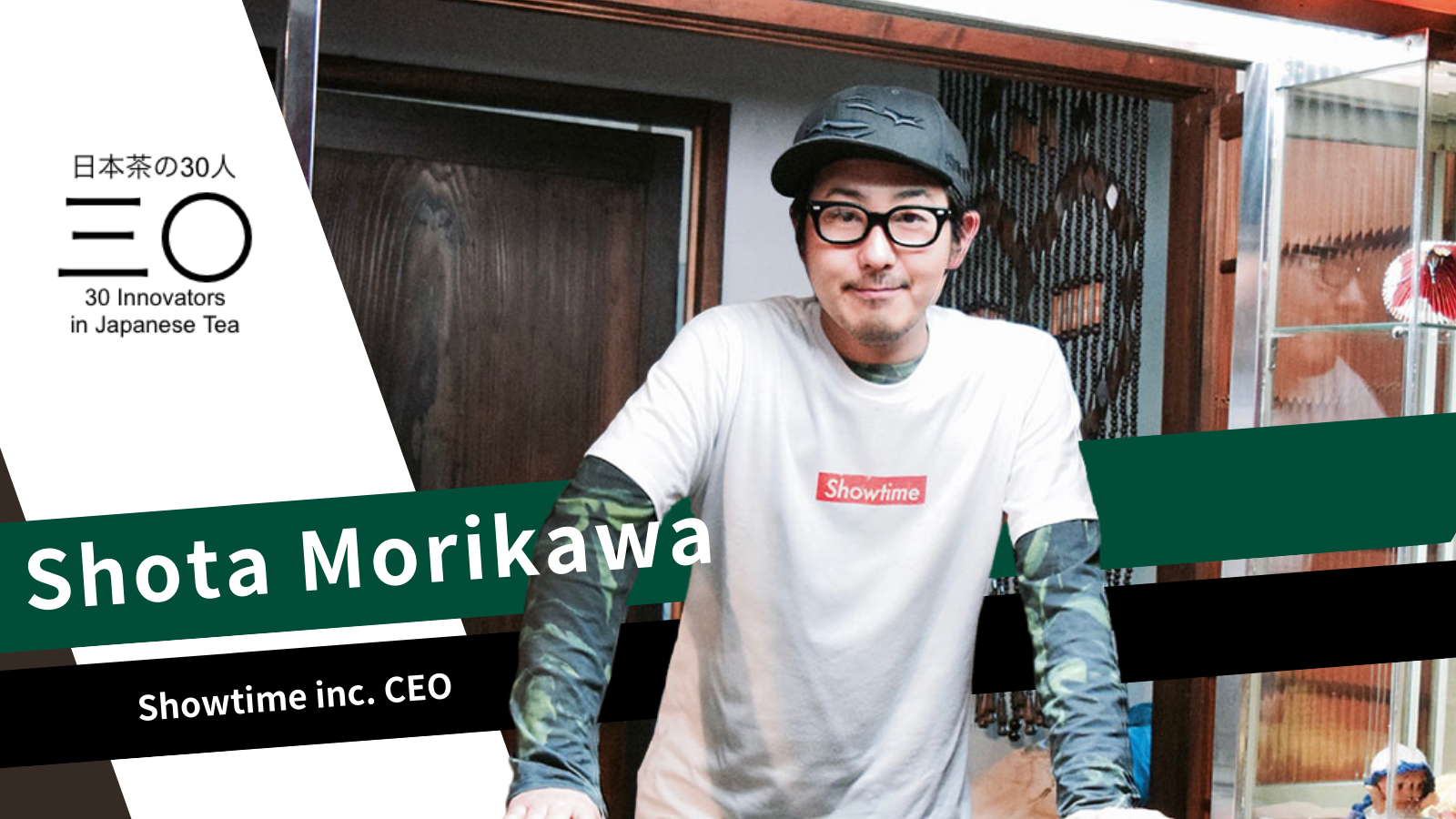A package is necessary to keep and store tea leaves.
During the Edo period, tea leaves were stored in ceramic pots called chatsubo. In the Meiji era (1868-1912), chabako – wooden tea boxes lined with zinc in use, followed by metal tins – chakan. And now tea leaves are stored in tea bags made of aluminum-coated resin sheets.
Tea packages can be made into a variety of shapes and can have the entire surface colorfully printed. There is a product that uses such tea packages to tease the world. It is called chabacco – a paper box that looks like a cigarette box and is packed with eight cigarette-sized sticks of powdered tea. Just like with a cigarette and fire, with chabacco and water, one can have a go anywhere. This ease of use and the quirky design of chabacco have become the rage, and chabacco has been spreading across the country.
Local chabacco are created in tea producing regions throughout Japan, and now there are more than 100 types of chabacco sold at about 200 souvenir and household goods stores throughout the country. In some places, instead of cigarette vending machines there are chabacco vending machines. Additionally, the warning message that is always included on cigarette packages is a humorous recommendation.
We spoke to Shota Morikawa, the CEO of Showtime Co., Ltd., the company that is expanding the horizons of tea by teasing the world with its chabacco.
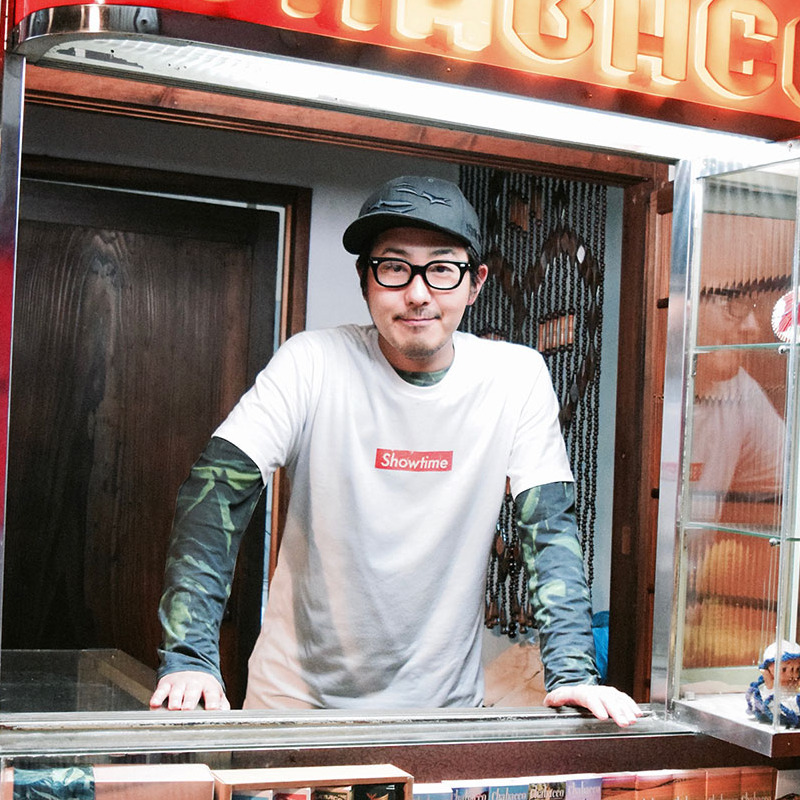
Shota Morikawa was born in Shizuoka Prefecture in 1983. After working in publishing and advertising in Tokyo, he established Showtime Inc. in 2015. Morikawa-san has been developing leaf tea products and promoting Japanese tea with the themes of attracting next-generation customers and improving tea prices in the tea industry, which is still struggling nationwide. By introducing the tea industry to a new stage, direction, and audience and by creating a showtime for it, he aims to promote the leaf tea culture that exists in tea production areas throughout Japan and to pass it on to future generations.
Contents
- 1 Chabacco instead of tobacco. What is chabacco?
- 2 Let’s make fun of the world and have a giggle with chabacco.
- 3 Enjoying Japanese tea in a package that looks like a local cigarette.
- 4 Using different types of teas from different regions according to one’s mood.
- 5 It is not a decline but a stepping stone to development. Japanese tea is interesting now!
Chabacco instead of tobacco. What is chabacco?
Q: Please tell us about Chabacco.
Morikawa: Chabacco is a product that contains powdered Japanese tea sticks in a package that looks like a cigarette.

Just before my trip to the USA, I was thinking about what to bring as a souvenir. I was planning on staying at a private accommodation like Airbnb, but I could not speak English, so I brought some things that could be like communication tools. Among them was also Japanese tea.
While the popularity of matcha is increasing overseas, the number of people who own a kyusu in Japan is decreasing. Under such circumstances, I was convinced that the portability of tea leaves themselves would become one of the important factors in the future.

And I was thinking… what kind of portable things are convenient to carry around. I was looking at tablets, chewing gum, and various other things, and when I saw a line of cigarettes in a convenience store, I thought “This is it!”.
I realized that cigarettes are something that many people carry with them, and that have not really changed in size for a long time. That is when I got the idea for Chabako.
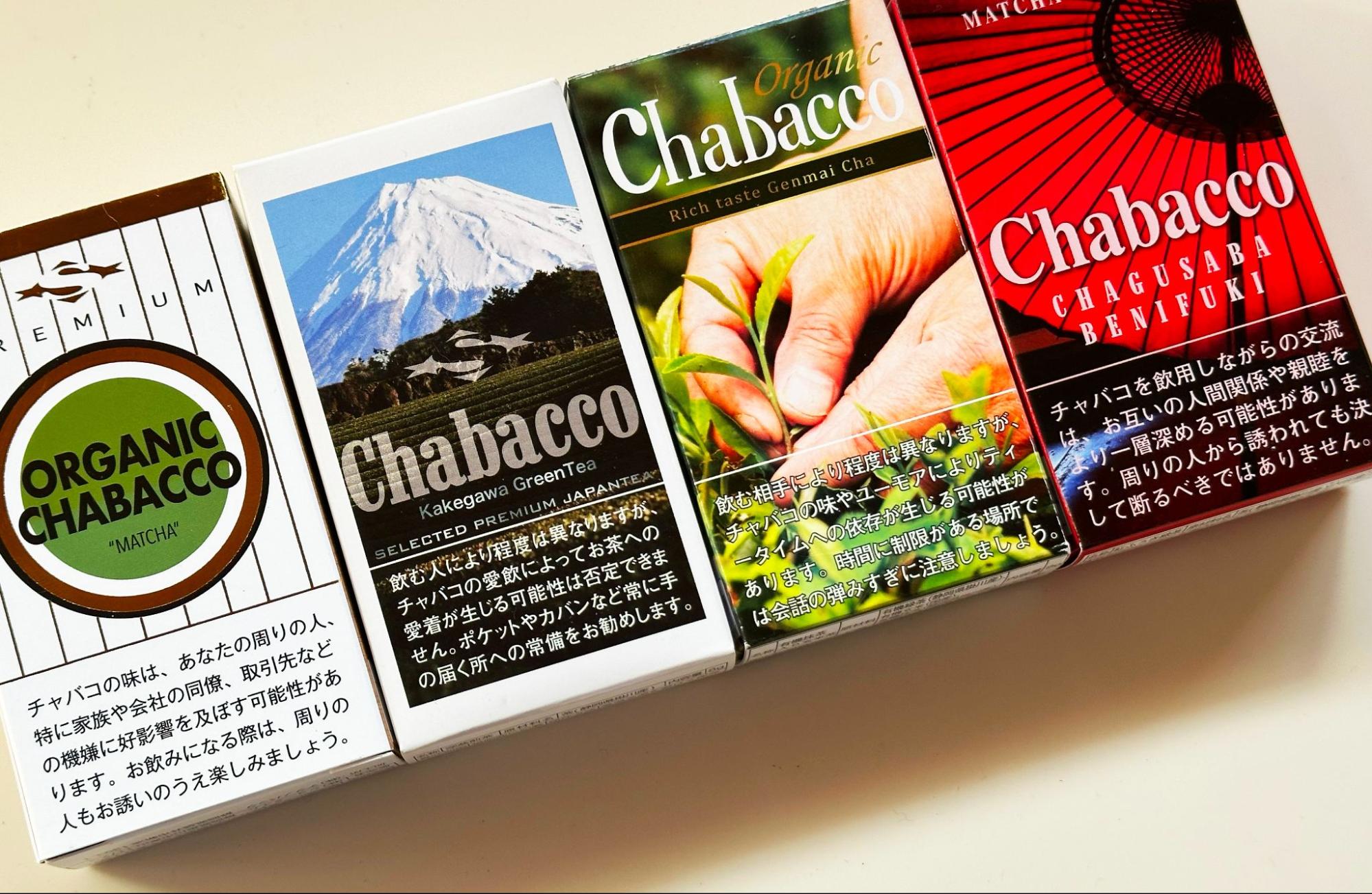
The key factor in deciding to use tobacco as a motif was the warning statement on the package. Since Japanese tea has the image of being healthy, I thought that this warning could be turned into a positive recommendation. Communication is generated through the cigarette-like appearance and the recommendation, and time is spent drinking Japanese tea while having a laugh.
In Japan, a room where a family can eat, chat, and relax has long been called ochanoma – a tea space. The word for challenging, unreasonable, and unusual is written by combining the character of tea with a character of no – muccha, a.k.a.no tea.
As these examples show, I felt that the role of the product as a communication trigger was also an important element, so I designed it with this in mind.
Q: What is the origin of the name Chabacco?
Morikawa: As some of you may know, wooden tea boxes called chabako are still used in tea factories. I myself came from an industry that had nothing to do with tea, so at firstI saw it I even wondered what it was (laughs).
However, when I got the idea for the chabacco from cigarettes, I thought of the connection with the tea boxes – chabako and decided to name the product chabacco. When I thought about it more deeply, I realized that for both smoking a cigarette and having a cup of Japanese tea we use the same Japanese phrase – ipuku suru. So there was another unexpected connection.
Let’s make fun of the world and have a giggle with chabacco.
Q: What is the concept of chabacco?
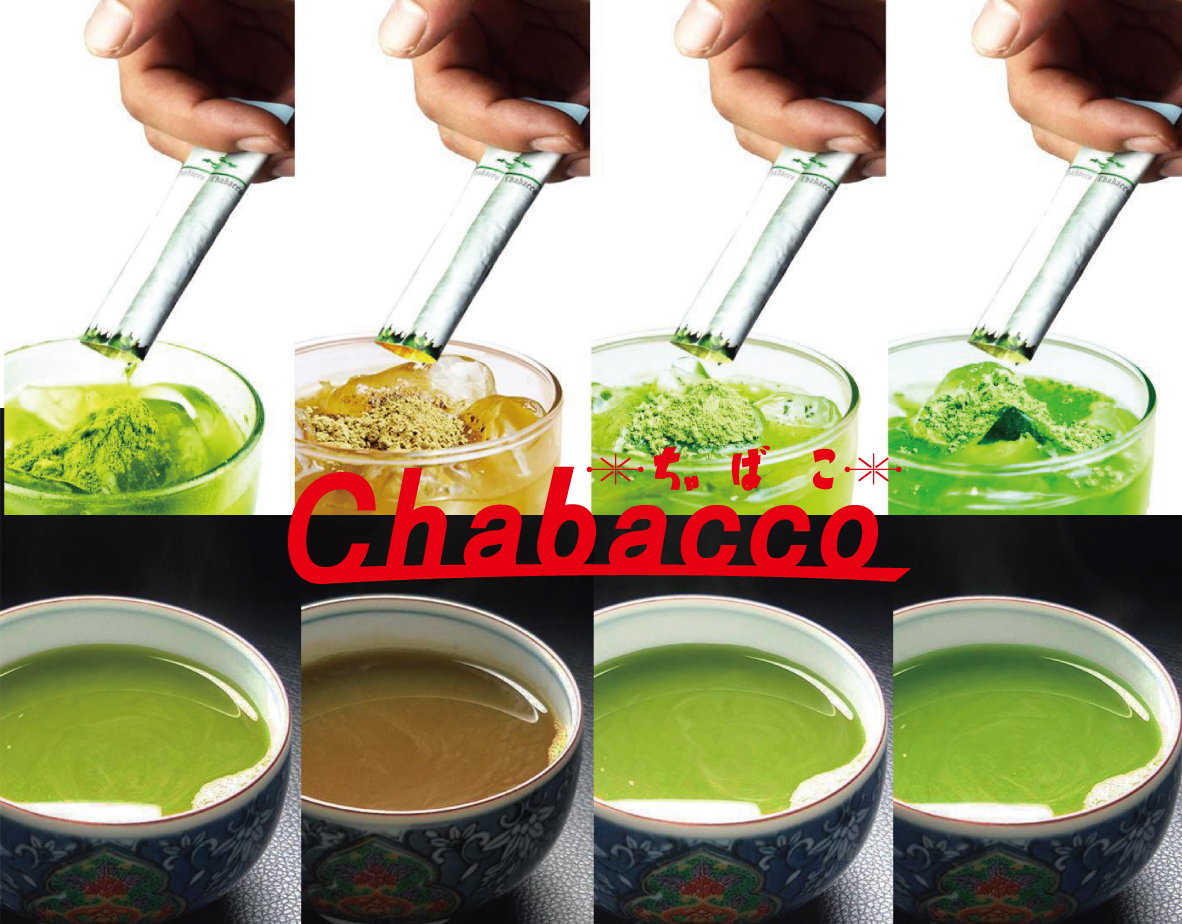
Morikawa: The concept of chabacco is to make the world a tea house.
The concept of chakabako has two meanings. One is to create moments of laughter through tea.
The second is to make Japanese tea not only a part of the daily life in Japan, but also a part of the lifestyle in the world, and to “ochanize” the world with Japanese tea.
When we started chabaco, there was an image in the industry that it was just the basic powdered tea. This was because there was a tendency for the basic powdered tea to be lower in quality than tea leaves used for brewing tea in a teapot. However, we decided to intentionally make powdered tea from high quality Japanese tea leaves.
Q: Wouldn’t the price go up if you sold high-quality tea?
Morikawa: When I mention the unit price, people sometimes are surprised that this powdered tea is so good. But one of my goals is to curb the tea price decrease, and I believe that it is essential to broaden the market for quality Japanese tea.
We pay an honest wage for the talented tea producers who have the knowledge and skills to make it. We believe that this is a prerequisite for passing on Japanese tea to the future.

Therefore, we do not intend to bargain on the price of raw materials, but rather purchase what we consider to be truly good at the price set by the producer. We cannot tease the world unless we use and spread good things.
Enjoying Japanese tea in a package that looks like a local cigarette.
Q: How widespread is chabacco today?

Morikawa: The number is increasing. We have about 200 sales outlets and more than 100 different packages. Among some shops that sell a large number of products, one location sells more than 10,000 units per year.
However, we were not on our own in expanding the development and distribution of local chabacco made from tea across the country. There also are several franchise businesses that we have licensed.
These business owners use truly great teas from all over Japan, and they work together to promote chabacco through some friendly competition, but with the same goal in mind.
Using different types of teas from different regions according to one’s mood.
Q: What is your mission and the mission of chabacco?

Morikawa: I believe that our mission is to pass on Japanese tea to the future.
After chabacco started to get attention and sell well, the next step was to diversify to other producing areas. Initially, there were six types of chabacco using tea leaves from Kakegawa City, Shizuoka Prefecture. But we realized that customers were more interested in the product itself – chabacco, than the fact that the tea was from Kakegawa. Therefore, by increasing the number of tea producing areas, and allowing people to taste and compare the unique characteristics and specialties of each area, we could make Japanese tea more interesting and appealing.
Common comparisons are like:
“XX tea in the morning, XX tea at night”.
“When I want to relax, I drink XX tea from XX prefecture”.
“When I need to get excited, I drink XX tea produced in XX prefecture”.
I hope that people will want to drink different kinds of teas from different regions depending on the time of day and their mood at the time.
Q: What is the best thing about the Chabacco business?
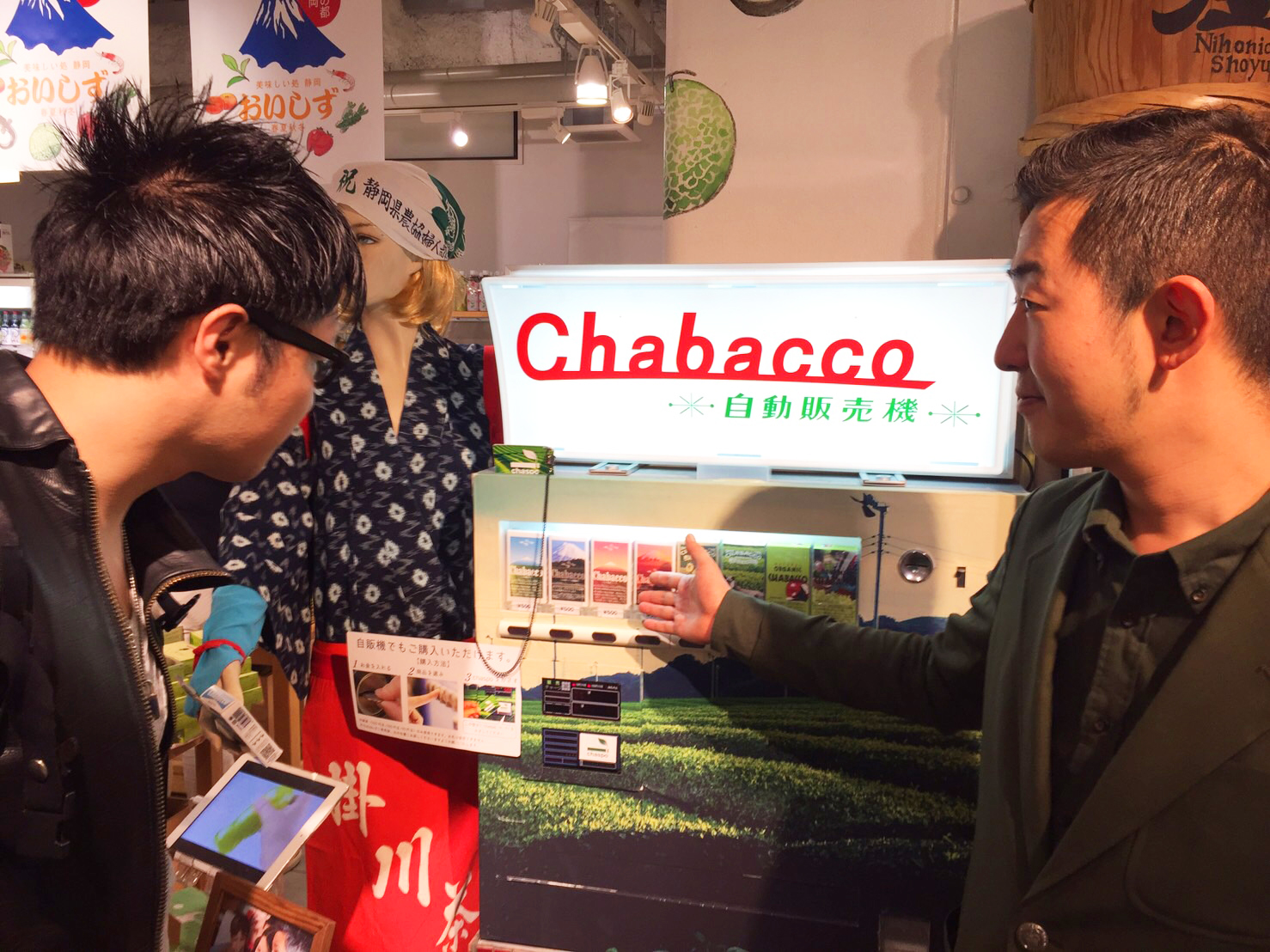
Morikawa: When we sell our products at events, it is interesting to see how customers are trying to communicate about chabacco. Some of them are playful and plan to use it in ways that make you say, “I see… I did not know there was such a thing!”
We are very happy when such customers come back to the sales floor the next day saying, “We were so excited that we ran out of everything, so we came back again to buy some more!”.
When we go to inspect vending machines, we often see customers happily selecting a product in front of the machine, saying, “This one looks perfect for you, doesn’t it?”.
Customers’ posts on SNS are another thing. I think that the unique charm and reward of chabacco that it allows customers to create various types of communications. And it also makes us grow as well.
Q: Please tell us about yourself, the creator of chabacco.
Morikawa: Originally I worked at an advertising company, but I became independent in 2011. For four years until I established Showtime Co. Ltd. in 2015, I was freelancing to produce advertisements, and I had an opportunity to go to the USA for work. At that time, I experienced the vastness of the world and the wonders of Japanese traditional culture, and that was the beginning of everything that led to chabacco.
That was in 2013, and by the time Showtime was established about two years later, I had already shifted firmly to the Japanese tea business. The president of the advertising company that gave me the opportunity to go to the USA still jokingly tells me, “I never thought you would go into the tea industry after I took you to the USA…” (laughs).

Q: From your point of view, is there anyone you feel is a benchmark or competitor, or someone who is working on an interesting initiative?
Morikawa: Yes, there are many (laughs).
I myself take pride in the fact that I approach Japanese tea with a unique sense of values and style that is not bound by stereotypes. And I feel that this trend has become even stronger in the past few years.
I recently had the opportunity to get to know tea business owners from all over the country at a tea-related event, and I felt a lot of jealousy because many of them offer very innovative products and services (laughs). There are people who are starting their own businesses with tea at a young age, and I sense an unprecedented energy in the tea industry.
It is not a decline but a stepping stone to development. Japanese tea is interesting now!
Q: What does Japanese tea mean to you?
Morikawa: Japanese tea is a world-class treasure of Japan. At the same time, how can we pass on such Japanese treasures to the future? I believe this is the challenge.
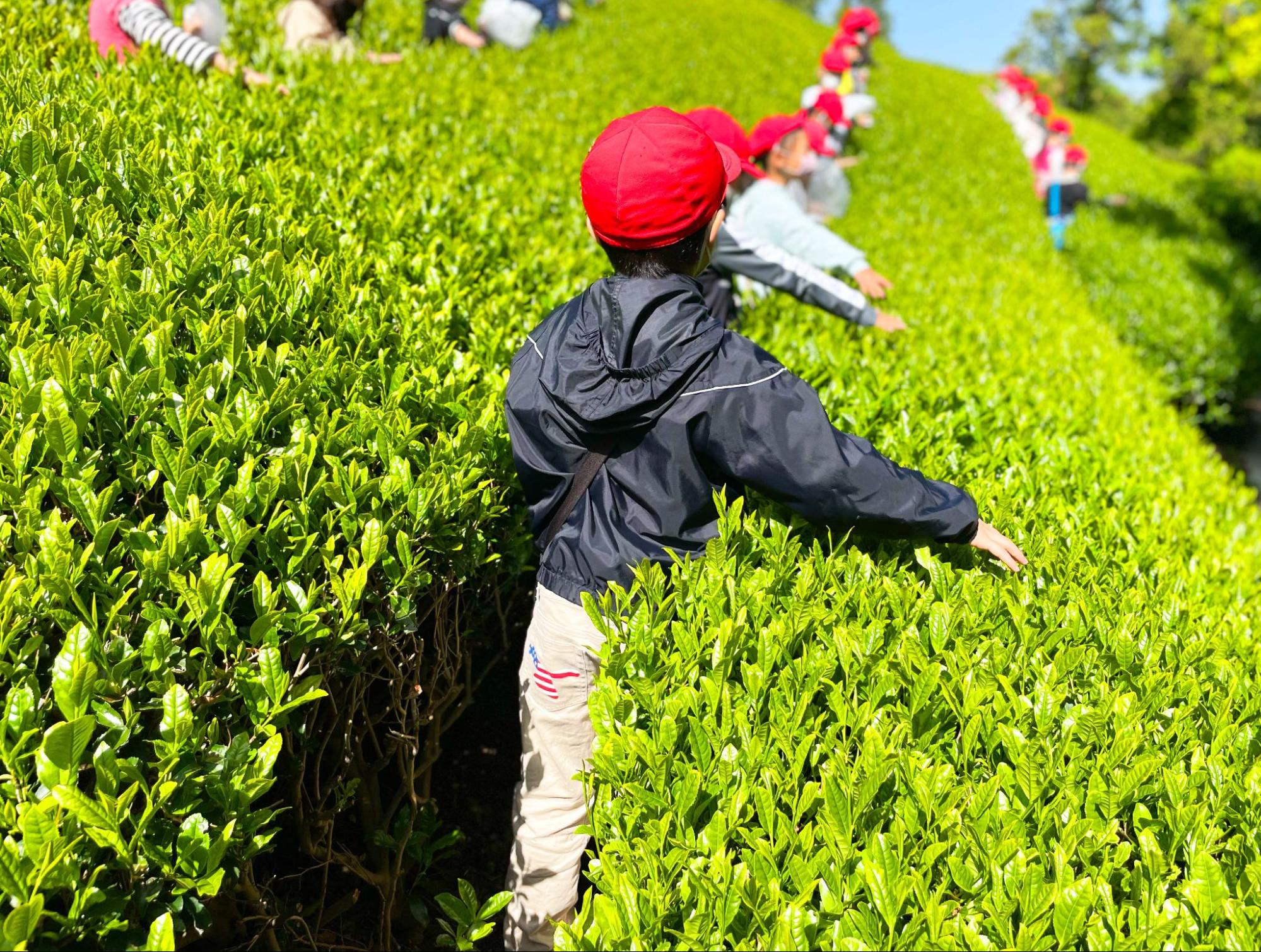
Q: What is your vision for the future of chabacco?
Morikawa: There are many things I would like to do. But first of all, I would like to make as many chabaccos as there are fascinating tea producing areas in Japan. Then, we could make a box with foreign teas. I think it would be nice to have a Chinese tea box, or an Indian tea box.
The strength of chabacco is that you can easily compare different kinds of tea in the same shape and using the same method. And I think it is also the deep nature of tea that makes this possible.
Q: Do you find it difficult to work with Japanese tea in the chabacco business?
Morikawa: More than the difficulties, I feel the possibilities. Tea is grown in a wide range of suitable areas, and there are people capable of producing high-quality raw materials in each of them. In addition, there is already the technology to transform raw materials into various forms, such as powder and liquid, and the know-how to pack them into various packaging materials and containers. I feel that because we have this technology and know-how that we have cultivated over the years as a foundation, we can achieve a wide range of things.
Q: What do you think the future of Japanese tea will be like? What do you want it to be like?
Morikawa: It is true that the tea industry is in a difficult situation nationwide. But it is also true that the belief that we cannot go on like this is giving birth to new ideas and services that would have been unthinkable during the boom years, when if you made it, it would sell.
In this sense, it is a very interesting time for Japanese tea, and in fact, I feel that customers’ interest in and concern for Japanese tea has certainly increased over the past few years.
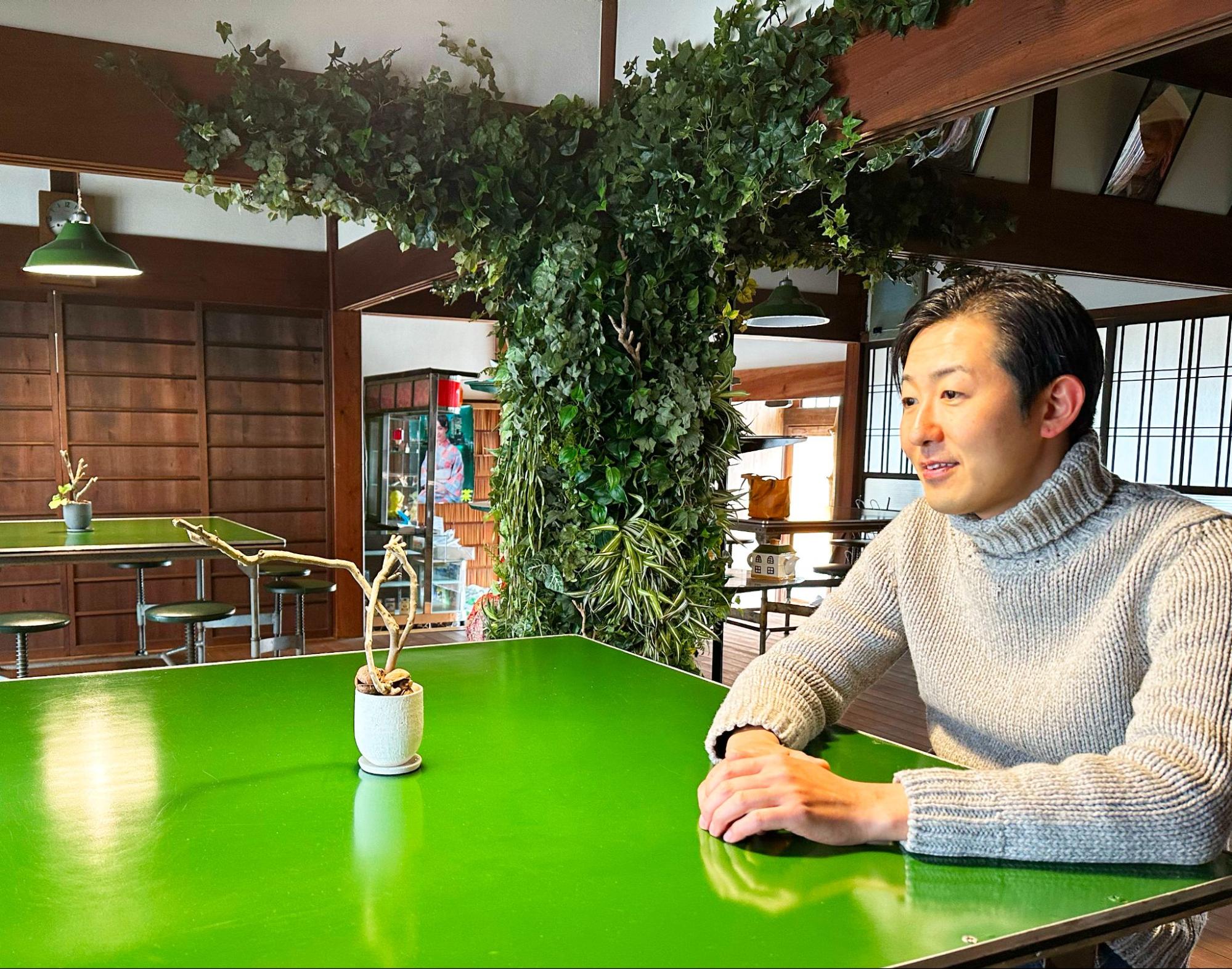
Japanese tea has been passed down to the present day through a long history of development and decline. It is true that the recession has continued for a long time, but it is only a short phase in the more than 700-year history of Japanese tea.
I would like to continue to look at this situation as a stepping stone to development rather than a decline, and to continue to take on new challenges.
*All photos by Showtime.

